90 Costa Rica Travel Tips: Things You Need to Know
Disclaimer: This article may contain affiliate links. Clicking on them may earn Costa Rica Vibes a commission, at no extra cost to you. Thank you for your support!
Are you looking for the best Costa Rica travel tips?
Costa Rica is a little slice of paradise located in Central America. The country is known for its biodiversity, beautiful beaches, dense rainforests, stable economy, and friendly citizens.
We have been living in Costa Rica since 2016 and have traveled extensively around the country. This place is amazing, but it has its quirks. There are definitely some things you should be aware of before visiting.
We compiled this list of 90 Costa Rica travel tips organized by category to help you have the best visit possible.
Get ready to learn about how to get around in this country that doesn’t have addresses, the best traditional foods you should try, the best way to pay for things, and so much more!
And, make sure you read until the end to discover the most important Costa Rica travel tip!
Entering and Exiting the Country
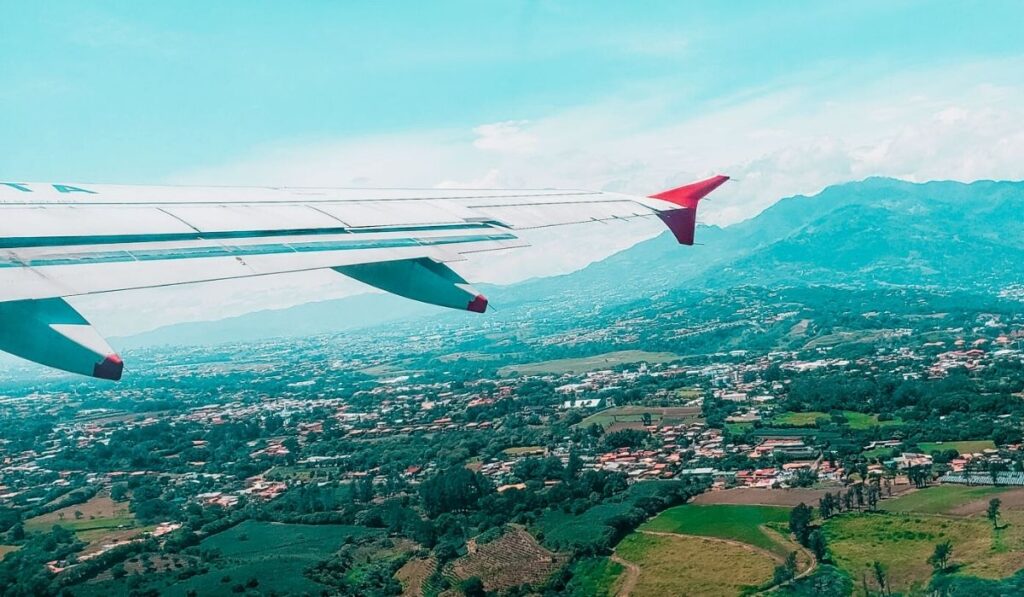
1. There are two international airports in Costa Rica
The San Jose Airport is the most visited airport in Costa Rica, however, Liberia International Airport in the northwest corner of the country is also a great option to fly in or out of.
We suggest the Liberia Airport if you plan to explore the Guanacaste region of the country.
We suggest the San Jose Airport if you plan to visit the Caribbean coast or south/ central Pacific coast.
2. Make sure you book your flight to San Jose, Costa Rica and NOT San Jose, California
Yea, it’s confusing and we have actually heard of people booking flights to the wrong airport.
The airport code for San Jose Costa Rica is SJO.
So, just make sure you are booking your flight to SJO and not SJC.
3. The San Jose Airport is not actually in San Jose
The airport is actually located in Alajuela and when looking for a place to stay near the airport you should search in Alajuela province. It is best to be as close to the airport as possible if you have an early flight because traffic around that area gets really crazy during rush hour.
Check out our guide to San Jose Airport hotels for more info.
4. We usually have the best luck finding flights on Skyscanner
Skyscanner is great for finding a wide variety of flights at affordable price points. If you would like to fly into San Jose and out of Liberia (or vice versa) we love to use their Multi-City feature.
5. Run to border control when you get off the plane
Sometimes the border control line moves fast and other times it can take foreverrrrrr.
While everyone else is hitting up the bathrooms when they get off the plane, run (or at least walk quickly so you don’t look crazy) to the customs line.
Do You Have Travel Insurance?
Don’t let unexpected medical expenses or trip interruptions overshadow your dream Costa Rican vacation.
Secure your worry-free Costa Rican adventure with Heymondo travel insurance
6. You are only allowed to stay in Costa Rica for 90 days without a visa
If you plan to stay in Costa Rica for longer than 90 days at a time you will need some type of visa granting you this access.
Another option is to do a border run. Head to Panama or Nicaragua for a few days and then renter Costa Rica to stay for another 90 days. This is technically not legal, but it exists in some sort of gray area of legality.
Check out our guide to entry requirements for more info.
7. You may be asked to show proof of departure when entering the country
This is much more common at the borders rather than at the airport, but it’s still best to have a copy of your return ticket with you just in case. Make sure your ticket of departure is scheduled 90 days or less from your arrival.
If you are planning on backpacking through Central America you can also show proof of a bus ticket to the next country you are going to.
8. The Panama border is a disaster show
I have nightmares about the Panama border crossing madness.
Not really, but it is pretty bad.
Entering Costa Rica is generally pretty fast, but entering Panama can be a miserable experience. The last time we were there we waited for over three hours (no joke) in the sun to get our passports stamped to enter Panama.
For more info check out our complete guide to the Costa Rica / Panama border crossing.
9. The Nicaragua border is smooth sailing
When entering Nicaragua they actually have people whose job is to help guide you through the entry process.
It’s amazing!
At first, I thought the guys there were just trying to get money out of us, but then I realized they genuinely were just super helpful and doing their job.
The last time we crossed the border from Costa Rica the whole process took less than an hour. Woot!
For more info check out our guide to the Costa Rica / Nicaragua border.
Transportation within Costa Rica
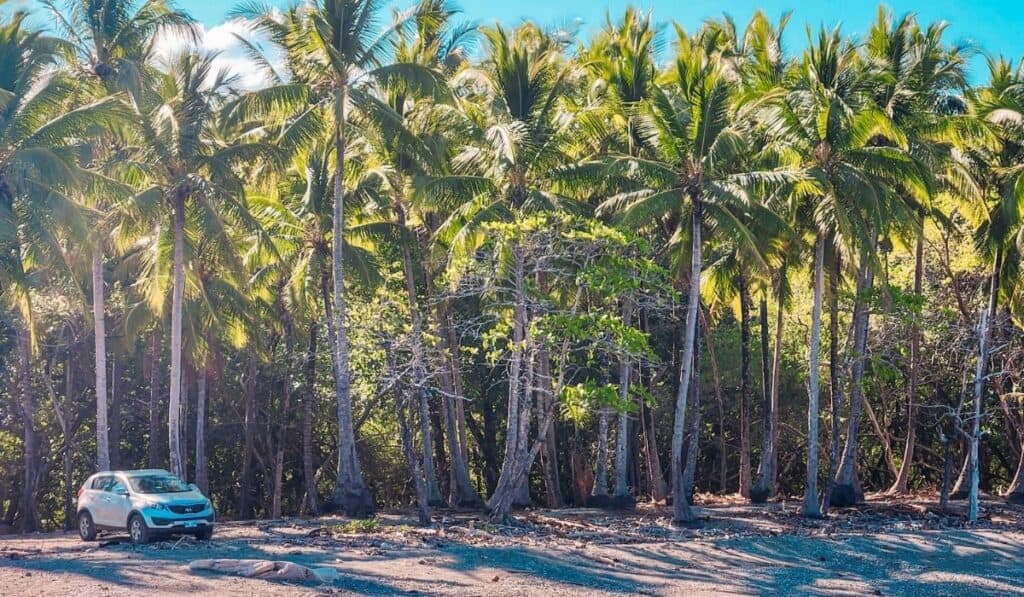
10. There are domestic airports throughout the country
If you would like to get to your vacation destination as quickly and easily as possible, consider flying from one of the two international airports to one of the many international airports in the country.
You can find out more with our guide to Costa Rica’s domestic airports.
11. We suggest renting a car to get around
We almost always suggest renting a car to get around. It is the best way to have flexibility in where you visit and what you see.
We suggest booking your car through our favorite local company, Adobe Rent-a-Car.
We partnered with Adobe, to bring all Costa Rica Vibes readers a 10% car rental discount plus tons of other great perks.

Adobe Rent-a-Car
- 10% discount for Costa Rica Vibes readers
- Free second driver
- 0% deductible on Liability Protection Insurance
- Excellent customer service
- New fleet of well-maintained vehicles
12. Waze works here and is your best bet for getting around
Don’t attempt to depend on paper maps. Roads in Costa Rica are crazy and constantly changing. We solely depend on the free app Waze to get around.
13. Uber is Illegal in Costa Rica
In the past, Uber lived in some legal gray zone in Costa Rica. However, the government has now made it clear that Uber is not allowed.
We always suggest taking an official Costa Rican taxi. These are the orange taxis with a green triangle on the door at the airport and red taxis with a yellow triangle everywhere else.
This is super important because the police are now stopping people they suspect of being an Uber driver. If you are in the car as a passenger you could be left stranded on the side of the road without transportation.
14. Shared or private shuttles are great
If you don’t feel comfortable driving long distances, you can always opt for a shared or private shuttle. You can then always rent a car once in town for day trips.
- BookAway is AMAZING for the best selection of shared shuttles throughout the country.
- And you can get a quote for a private shuttle with Adobe Transfers here.
15. Public buses are decent
The public buses in Costa Rica are ridiculously cheap and convenient. Unlike most other things in the country, they actually generally run on time. Granted they are not always the most comfortable, but they are OK.
If you want to travel to several destinations, buses are not the best because you will often have to go back to San Jose to connect to your next destination. It’s too much of a pain.
16. Drivers are a bit crazy
Get ready for people ignoring traffic signals and motorcycles speeding by you on either side of your lane.
It always makes me laugh because people in Costa Rica are so relaxed about everything else, but they are always in a rush when it comes to driving.
Although drivers are nuts, you should be fine driving here. Just don’t drive in downtown San Jose (that’s where the real crazies are).
17. Avoid San Jose like the plague during rush hour
First of all, I suggest avoiding driving in downtown San Jose always. It is a bit insane. If you do need to drive on the outskirts of the city (aka near the airport) avoid doing so during rush hour if possible.
Just as an example, from where we live it can take two hours to drive to the airport during rush hour. On a day without traffic, it takes about 15 minutes.
18. There are no addresses here
I’ve told my family a million times that we do not have addresses here, but they cannot seem to wrap their head around it.
It just seems so insane!
If you need to input a destination into your GPS, look for a nearby park ahead of time and input that as your destination.
19. Distances may seem close but can take forever to drive
Between traffic, curvy roads, unpaved roads etc it can take a lot longer to drive to a place than it looks.
While planning your travels, definitely look up the driving times of everything beforehand and then add at least 30 minutes to an hour to whatever it says.
20. There are tolls in Costa Rica
There are tolls on the major highway in the country heading from San Jose to the Pacific coast. They accept US dollars though, so if you are heading from the airport to the beaches, don’t stress if you haven’t switched to colones yet.
I like to pay with a $10 bill at the first toll and they will give you change in colones. This will be enough colones to pay the rest of the tolls on your drive.
Things to Do
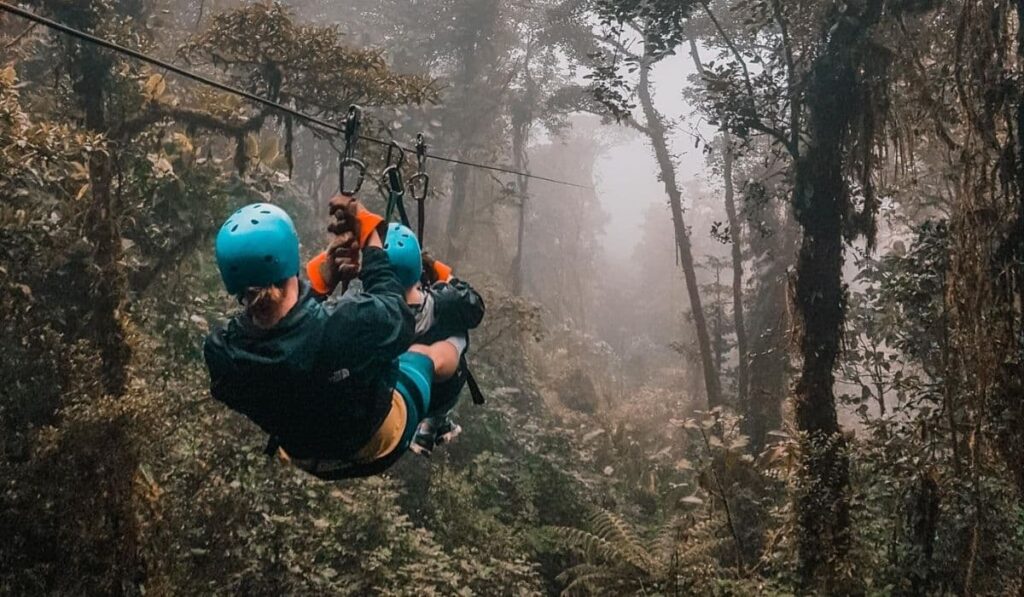
21. Definitely make time to explore national parks
Costa Rica is renowned for its diverse ecosystems. Visit national parks like Manuel Antonio National Park, Poas Volcano, and Corcovado National Park to experience lush rainforests, active volcanoes, and abundant wildlife.
Check out our guide to Costa Rica National Parks for more details.
22. Experience zip lining
One of the most popular adventure activities in Costa Rica is ziplining. It is the perfect way to view Costa Rica’s diverse landscape from above.
You can enjoy the thrill of zip lining through the treetops in various locations across the country. Our personal favorite destinations for this are Monteverde and La Fortuna.
23. Make time to hit the beaches
With both Pacific and Caribbean coastlines, Costa Rica offers a variety of beaches. Whether you’re a surfer, sunbather, or nature enthusiast, there’s a beach for you.
Typically, the Pacific coast is known for white sand beaches and the Caribbean has more dark sand beaches.
Also, usually the Caribbean beaches are less crowded than the Pacific ones.
24. Try Surfing
Join the surfing culture in Costa Rica by catching waves along the coastline.
From beginner-friendly breaks to challenging swells, there’s a spot for every skill level.
Some of the most popular surfing towns are Tamarindo, Playa Avellenas, Santa Teresa, Pavones, and Hermosa (near Jaco).
Check out our guide to surfing for more info
25. Visit Coffee Farms
If you have the chance, definitely embark on a coffee farm tour. This is the perfect way to learn about the coffee production process, from bean to cup.
Our favorite area for this activity is in the hills above Alajuela.
Check out our guide to Costa Rica coffee for more info
26. You should try and break out of your comfort zone
Costa Rica is an adventure paradise. I used to not be the most adventurous person, but this country has definitely expanded my adventure palate.
So, try rappeling down waterfalls, book the white water rafting tour, go snorkeling or diving. These are experiences you will likely look back on with fond memories and be thankful that you tried them.
27. You don’t need to reserve far in advance
Typically, it is possible to arrange tours up to a few days in advance. However, during the peak tourism season, it is always a good idea to book things. a bit further in advance.
28. A rental car will allow you to save money on activities
One downside in Costa Rica is that guided tours with transportation can be expensive, especially if you are traveling as a family.
Having a rental car will allow you to do more exploring on your own without depending on tours.
For example, you could take a national park tour with transportation and a guide. This will often run you at least $50 per person.
Or, you could drive and only pay for national park admission. This will run more like $15 per person.
29. It is sometimes worth it to take a wildlife tour
I know, I’m contradicting myself here. But, sometimes taking a tour is worth it.
One great thing about guided wildlife tours in national parks or reserves is that the guides usually walk those trails almost every day. They know exactly where the animals hang out and are usually super knowledgeable.
Plus, guides often carry telescopic lenses so you can get a great view of those hard to spot animals such as sloths.
30. Viator is great for booking activities
Recently we have been booking a lot of activities through the Viator website.
We have been doing this because they typically have great cancellation policies (but check each listing).
We feel it is a good way to support local companies but with the security of a big company like Viator.
Money and Currency

31. The currency in Costa Rica is colones
The official currency of Costa Rica is the Costa Rican Colón, often symbolized as “₡” or simply “CRC”.
However, U.S. dollars are widely accepted in many tourist areas.
32. Exchange Rate
The exchange rate between U.S. dollars and Colones can fluctuate. It’s a good idea to check the current rate before you travel.
We like the free app XE Currency Exchange for keeping track of the current rate.
33. Cash vs. Card
While credit and debit cards are widely accepted in larger cities and tourist areas, having some Colones in cash can be handy for small purchases, local markets, and more remote areas.
As far as credit cards, Visa and Mastercard seem to be the most widely accepted cards. We have heard that American Express is sometimes not accepted at certain places.
34. ATMs are common in cities and towns
Look for Banco Nacional, Banco de Costa Rica, and other reputable bank ATMs to withdraw Colones.
Be cautious of using standalone ATMs in remote locations. It is best to do this during daylight and not to take out large amounts at once.
35. You may pay foreign ATM fees
Check with your bank or card provider about foreign transaction fees and ATM withdrawal fees. Usually this is about $5.
Some banks offer fee-free international transactions or have partner banks in Costa Rica. So, if you are concerned about the cost of using an ATM, I suggest checking with your bank before traveling.
36. Currency conversion
If offered the choice to pay in U.S. dollars or Colones, always choose Colones.
Often businesses might not have the most updated exchange rate so you can end up paying more if using US dollars.
37. Pay in small denominations
It’s a good idea to carry smaller denominations of Colones for convenience. This is helpful when leaving a tip, paying for parking, or when making purchases at local markets or small shops.
38. Change in Colones
When receiving change for a purchase in U.S. dollars, you might receive it in Colones. Make sure to clarify the amount if needed.
39. Tipping
Tips are not included in restaurant bills, and it’s customary to leave a tip of around 10% to 15% in restaurants and for tour guides. However, it is not required. Most locals do not leave a tip.
40. Currency Exchanges
Don’t change currency at the currency exchange places in the airport. They tend to have a really bad exchange rate and you can lose out on a lot of money.
Instead, you’ll get the absolute best rate by asking your bank at home to get you some colones before your trip.
You can find out more with our Costa Rica Currency Guide
Local Cuisine and What to Eat
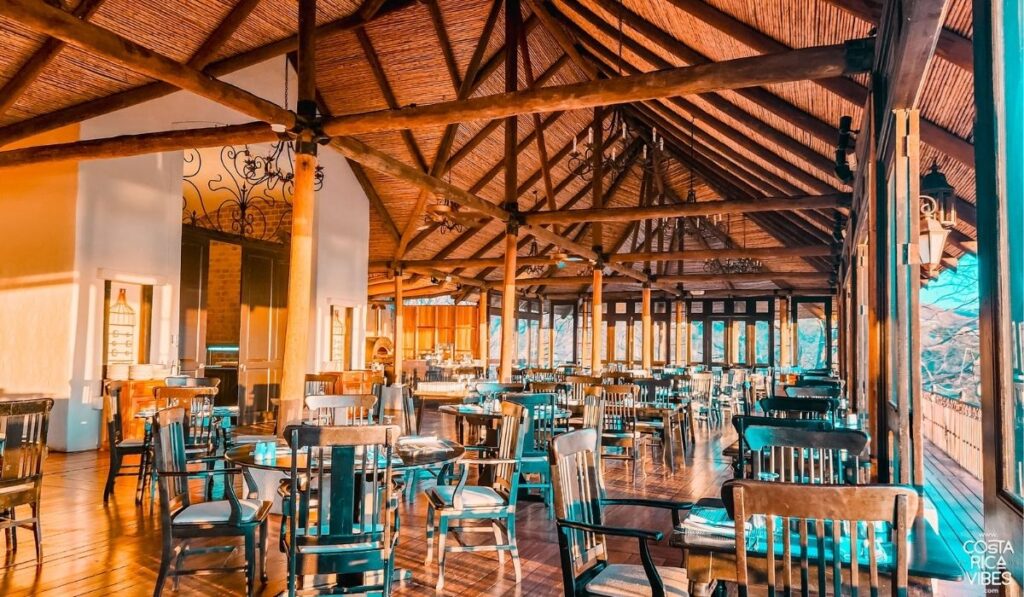
41. Eat at the small local “sodas” to save money
There are small local restaurants called “sodas” in every town. These restaurants will give you a basic plate of food which usually has rice, beans, salad, and a meat of the day for about $8 (this meal is called a casado).
Usually, these meals are incredibly tasty (and cheap).
You can get more tips with our full guide to eating in Costa Rica on a budget.
42. You need to try the local fruits
Have you ever eaten a guanabana? What about a granadilla?
I guarantee that there are fruits in Costa Rica that you have never even seen before!
One of our favorite things to do on the weekends is to go to our local farmers market and try some new unusual fruit.
You can find out all about the crazy fruits in Costa Rica with our complete Costa Rica fruit guide.
43. You can usually drink the water
In Costa Rica, the tap water is drinkable in most bigger towns.
However, if you would like to be a bit cautious, we suggest buying a big gallon jug of water and refilling smaller bottles.
I am a big fan of the LifeStraw water bottle for some added filtration (especially when drinking tap water).
Also, ask at your hotel before filling up your water bottle from the bathroom sink. This water is not always potable.
Check out our guide to Costa Rica tap water for more info.
44. Definitely try the local specialties
Have you ever eaten Gallo Pinto? What about a casado? Ceviche?
The items listed above are just a few of our favorite traditional foods in Costa Rica that we strongly suggest you try.
Check out our guide to Costa Rican foods for more delicious ideas.
45. Buy souvenirs at the grocery store
This may sound totally strange, but the best and cheapest souvenirs are at the grocery store.
What do people really want you to bring back for them from your Costa Rican travels? Most likely they’ll love some coffee or chocolate.
The coffee and chocolate here are on point. Instead of buying coffee or chocolate from a fancy souvenir shop you can buy the same products at the grocery store for usually about half the price.
For coffee, we highly suggest the brand Britt mostly because their bags are designed to look very Costa Rican.
46. If you are gluten-free you will have tons of options
My mom has a gluten allergy and she loves visiting us here versus when we used to live in Germany because there are so many food options for her.
Costa Rican diets are typically heavy on rice, beans, corn, meat, eggs, vegetables, and fruit. You will have no problem finding a meal that can satisfy a gluten intolerance or allergy.
47. Larger grocery stores have all the foods you are used to
The best (but also most expensive) grocery store in Costa Rica is called Automercado. This store feels a lot like any normal grocery store in the US.
Just keep in mind that all imported products tend to be expensive due to import taxes.
48. Go out for breakfast at least once
Traditional Costa Rican breakfast is the best! This meal typically consists of Gallo Pinto (a mix of rice and beans), eggs, fried plantains, and fresh fruit. Add a mixed fruit juice and you will have yourself the perfect Costa Rican breakfast.
If you stay at a hotel with breakfast included I can almost guarantee that this is what they will serve.
Planning Where to Stay
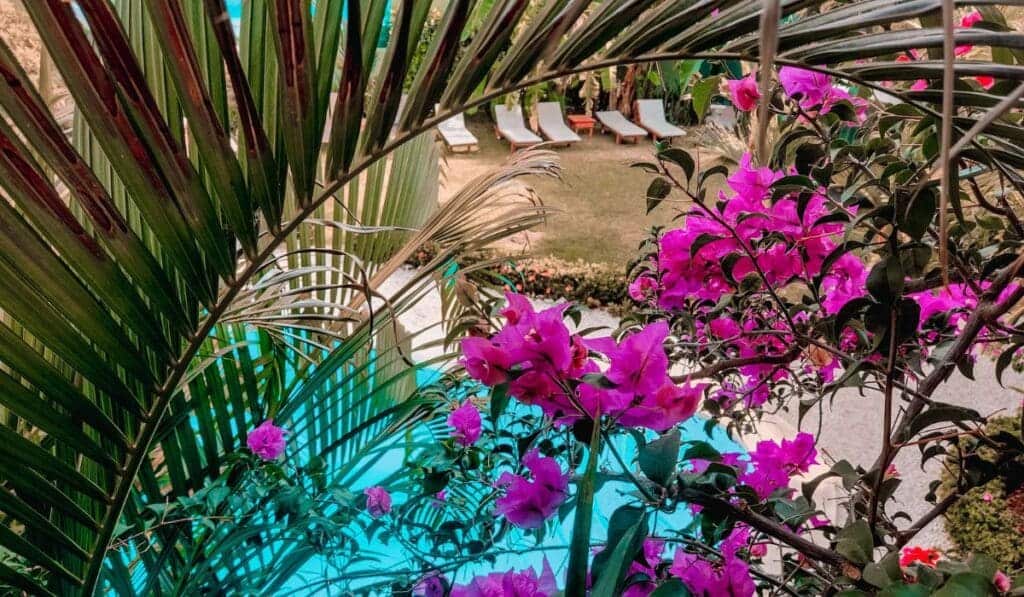
50. There are resorts for all budgets
Costa Rica is typically not the best place to stay if you are looking for a resort vacation, because it is an expensive country.
If you would like a more budget-friendly resort experience with luxury, head to Mexico or the Caribbean islands.
However, if you are eager to stay in a resort in Costa Rica, you can find a place for all budgets. Just know that you won’t get as much bang for your buck.
Check out our guide to resorts in Costa Rica for all the best places
50. We suggest one beach and one jungle destination for one week
With one week you can easily visit one beach and one jungle destination. This will give you the perfect brief overview of the country.
For a jungle destination, La Fortuna and Monteverde are always great options.
For beach, you really can’t go wrong with most places. I suggest deciding your destination based on which airport you are flying into and what you would like to do while on the beach.
51. VRBO is a great option
We love using VRBO in Costa Rica!
Usually, the rates are cheaper than on hotel booking sites and we like to have the option of getting our own place.
It can be nice to have your own little house instead of staying in a hotel with tons of other guests. Plus most places have a kitchen so you can save money by cooking your own meals.
52. Booking.com usually has free cancelations
If you do opt to book a hotel, we suggest doing so over Booking.com.
We love Booking.com for Costa Rica travel because most places have free cancellations up to a certain date.
That means you can secure your accommodations and always adjust your travel plans later if you find a better place to stay.
53. Stay in a place with a kitchen
Restaurants can be expensive in Costa Rica. We love to try and stay at a hotel or a VRBO with a kitchen.
You probably want to try out some of the great restaurants in the area, but it can be helpful to at least be able to make your own breakfast or store any leftovers in a fridge.
54. Read reviews in detail
Always check the reviews on VRBO and on Booking.com.
We only stay at places with at least five reviews and we read these reviews in detail.
You don’t want to end up at a horrible place on your Costa Rica vacation.
55. Pay attention to if a place has AC
This especially applies to beach destinations. Even at night, it can stay warm and humid. There is nothing more miserable than trying to sleep in sweaty sheets and only having a small fan.
56. Places with a pool are always a good idea
You are on vacation in a tropical destination so, book a place with a pool if you have the option.
57. Pay attention to the exact location of your hotel/ vacation rental
I say to pay attention to the exact location because sometimes places can be located on dirt side streets that may be hilly.
You need to make sure that you can actually get to your accommodation without a 4×4 vehicle.
Also, sometimes places are advertised as “near the beach” and you might actually have to drive 10 minutes or more to the beach.
So, definitely clarify the location before booking.
Travel Essentials (What to Pack)

58. Leave the nice stuff at home
Costa Rica is safe, but it is best not to stand out too much. By leaving nice jewelry and fancy clothes at home you will make yourself much less of a target for petty theft.
59. Bring that rain jacket you are debating about
Every area of the country has a different climate and you never know when a torrential downpour will start.
Even if you are traveling during the dry season, certain parts of the country (Monteverde, Rio Celeste, San Gerardo de Dota) can have rain.
We like to pack a lightweight jacket that won’t get too sweaty while wearing.
Check out the rain jacket I own and love
60. Pack a dry shirt
No, I don’t mean a shirt that is dry.
I mean one of those shirts that dry really quickly which is meant to be worn in the water.
See the sun is so strong here that you can get burned really easily.
I like to swim with a dry shirt on to protect myself.
Check out the perfect dry shirt for men
Check out the perfect dry shirt for women
61. Pack gallon-size ziplock bags or keep your plastic shopping bags
Because of the humidity sometimes it is impossible to get your clothes to dry once they get wet.
We always carry a few plastic shopping bags or gallon size ziplock bags for when we move to our next location while traveling when we still have wet clothing.
They take up almost no space in your luggage but definitely come in handy.
62. Opt for a large backpack instead of a suitcase
Sometimes hotels or vacation rentals aren’t the easiest to access.
For example, we recently stayed in a place at Manuel Antonio that was located on the side of a hill. From the parking lot, we had to go up about 50 stairs to our bungalow.
In situations like these, it is so nice to have a large camping backpack rather than a suitcase.
Check out our go-to backpack that can usually be used as a carry-on
63. Don’t forget motion sickness pills
Some roads in Costa Rica are really curvy and hilly. If you or anyone in your group is prone to motion sickness, it is always a good idea to bring some motion sickness pills.
Personally, I find that I use them frequently here between boat rides and crazy roads.
If you forget them, you can always buy some at a local pharmacy or even usually in the grocery store.
At the grocery store, you most likely won’t see them on the shelf. They are often kept behind the counter at a cash register. They are often sold by pill not by the entire pack.
64. You can always purchase whatever you forget
Costa Rica has pretty much everything. If you forget something at home, have no fear! You can most likely find it here. Just note that you might pay a bit more than you would at home.
Local Culture and Customs
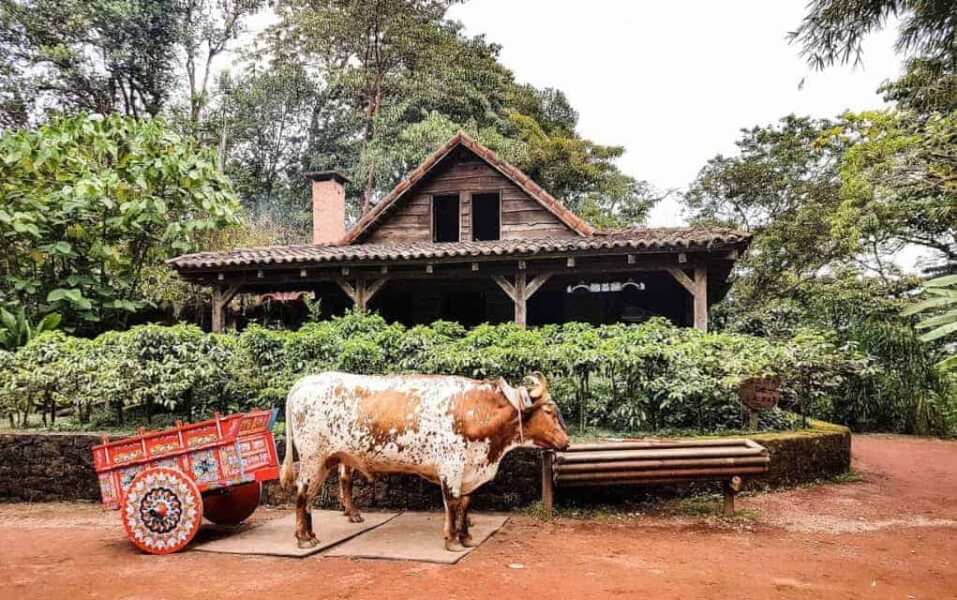
And now, here are some fun facts about the country. This will give you a greater understanding pf the culture and what Costa Rica is all about.
65. Ticos & Ticas
Costa Ricans refer to themselves as “Ticos” ( for males) and “Ticas” (for females). Collectively they are known as “Ticos”.
66. Blue Zone
The Nicoya Peninsula (the area where Montezuma and Santa Teresa are located) is one of the five Blue Zones in the world. This means it is an area with the highest life expectancy rate.
67. Happiness
Costa Rica is categorized as one of the happiest countries in the world. You will see it when you are here. Ticos are almost always smiling and enjoying life to the fullest.
68. Pura Vida
The official motto of Ticos is “Pura Vida.” This directly translates to “Pure Life.” Costa Ricans take this motto very seriously and generally stay very relaxed about most things in life.
69. Language
The official language is Spanish in Costa Rica. However, a large percentage of citizens speak at least some English due to the high percentage of tourists.
70. Literacy
Costa Rica has a 96% literacy rate. This is the highest of any Central America country.
71. Military
Costa Rica does not have a standing army. In fact, the army was abolished in 1953.
72. Important Exports
Bananas and coffee have historically been the biggest exports from Costa Rica. In fact, Costa Rica is the second-largest exporter of bananas in the world.
73. Renewable Energy
Costa Rica generates more than 99% of its electricity by renewable energy.
If you visit the northern part of the country near Rio Celeste you will see all of the windmills used for wind energy.
74. Ticos are generally the nicest people
Whenever I’m stressed and need to cheer up I like to go to our local farmers market because it is the perfect spot for seeing a genuinely nice and cheerful community in action.
However, sometimes they are so nice that they don’t want to let you down.
For example, if you ask for directions it is not unusual for someone to give you incorrect directions instead of just saying that they don’t know where you need to go.
75. Tourism is Super Important
Tourism is the leading industry in Costa Rica with approximately 9% of the country’s citizens being employed in the industry. That means 600,000 jobs.
Over three million tourists typically visit the country annually with about 40% coming from the US and 6% from Canada.
Safety and Security
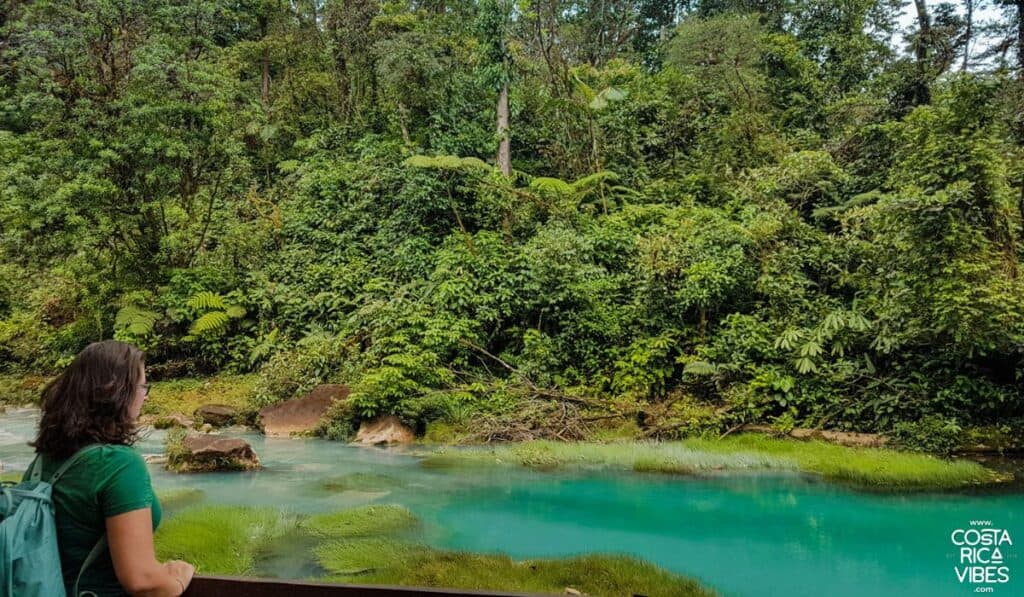
76. The wildlife shouldn’t bother you
The keyword here is “shouldn’t,” but you just never know.
Yes, this is a country that has tons of poisonous or dangerous animals. Yes, you will probably see some of these animals in your travels. However, typically you will be fine unless you bother them.
77. Sign up for STEP
If you are a US citizen, head on over to the STEP website and sign up before your trip.
STEP stands for Smart Traveler Enrollement Program.
It is a free program by the US government meant to keep track of where you are in the world. It allows you to get notification of any safety concerns in the country you are traveling, allows the government to know where you are in case of an emergency such as a natural disaster, and helps you to stay connected to family in case of emergency.
78. Wear lots of bug spray
Zika and dengue can both be an issue in Costa Rica. Make sure to wear bug spray and you will hopefully be OK.
For more info check out our guide to mosquitos in Costa Rica.
79. Don’t forget to purchase travel insurance
Heymondo travel insurance was designed with ease and flexibility in mind.
Their comprehensive plans offer 24/7 assistance, trip cancellation and interruption coverage, lost baggage coverage, assistance in case of medical issues, as well as the option to add-on adventure activity coverage.
↳ Get Your Travel Insurance Quote
80. The sun here is crazy strong
Don’t forget that Costa Rica is not too far from the Equator. If possible, we suggest bringing sunscreen with you from your home country.
You can most definitely buy it here but it is typically a bit more expensive.
For more info check out our guide to the sun in Costa Rica.
81. Petty crime can be an issue
Violent crimes are unusual, but petty crimes do happen. It is always best to be on guard.
For more info check out our guide to crime in Costa Rica and how to protect yourself.
82. Be careful in the water
The two things that freak me out sometimes in the ocean here are rip currents and crocodiles. Yes, there are crocodiles in the rivers that sometimes make their way into the ocean. This typically only happens at spots where large rivers make their way directly into the ocean.
Always ask at your hotel where it is safe to swim. Also, pay attention to signs on the beach and see where other people are swimming.
83. Make a copy of your passport
In the off chance that your passport is lost or stolen, it can be helpful to have a copy of your passport. This will help to expedite the process of getting you a new passport.
If you are a US citizen there is a US Embassy in San Jose. This is where you would need to go if something like this happens.
84. Never leave things of value in your rental car
Because petty theft is the most common crime, rental cars can become an easy target for robbers.
It is best to never leave anything visible in your vehicle and definitely never leave anything of value in the car.
When possible, park in protected lots with a guard.
Weather and Climate
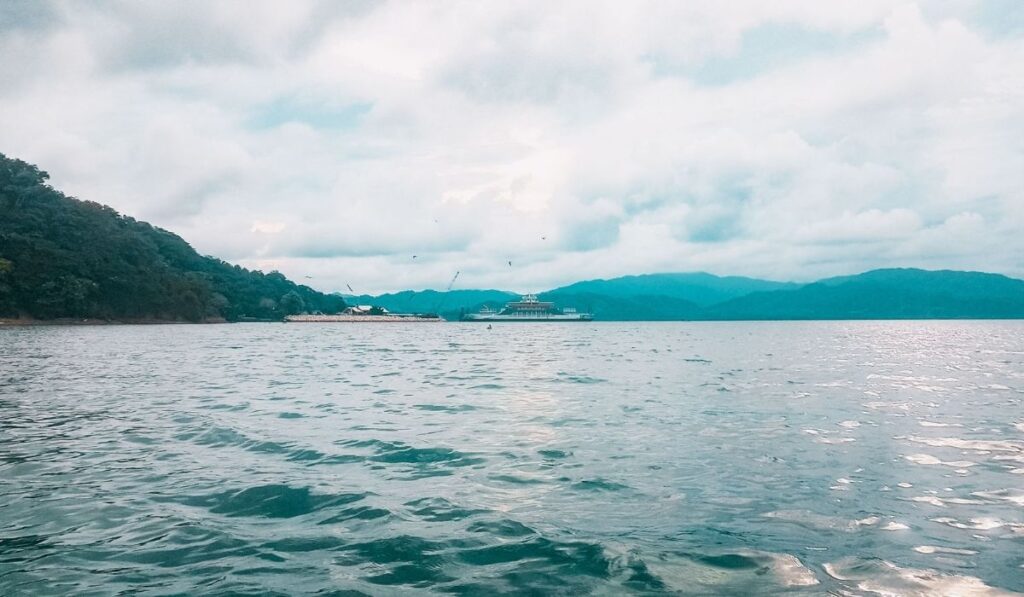
85. The rainy season is opposite on each coast
The dry season on the Pacific and in the central part of the country runs from late December until the end of April.
On the Caribbean coast this is the rainy season.
So, if you experience bad weather, just drive a few hours to the other coast. 😉
86. The dry season is the most expensive time to visit
Most hotels and activity companies have different prices depending on the time of year.
During the dry season everything is at peak high price.
If you would like to save money, travel in July or August for lower prices, less tourists, and mostly OK weather.
87. July is our favorite month in Costa Rica
We love Costa Rica in July because everything is green again, prices are lower, and usually there are about two weeks in the middle of July when the rain will stop temporarily.
Even when it is raining, you can expect about a two-hour rainstorm every afternoon and then the weather turns nice again.
88. The sun rises and sets at almost the same time year round
The sun rises and sets around the same time every day of the year. In total there is about a thirty-minute difference in sunrise and sunset time throughout the entire year.
You can expect the sun to rise between 5:15am and 5:45am every day and the sun sets between 5:15am and 5:45pm every night.
Yeap, we have about exactly 12 hours of daylight every day. It gets a bit like groundhog day after awhile, but I’m definitely not complaining.
Check out our guide to Costa Rica weather for more info.
89. Yes, there are earthquakes
Earthquakes are quite common in Costa Rica. In fact, there are typically several small earthquakes every day in the country.
Fortunately, most are so minor that you won’t even feel them.
90. Hurricanes and tropical storms are rare
Since living here, Costa Rica has experienced a few topical storms and hurricanes, but typically this is very rare.
If a storm occurs it is usually in the fall, which most likely is not a time of year that you will be visiting the country in anyway.
Check out our guide to Costa Rica weather for all the weather related tips
The Most Important Costa Rica Travel Tip is…..

You are going to need to relax
And we have come to the most important thing to know when traveling to Costa Rica!
Costa Rica is the most chill place we’ve ever been to. The mantra for life in Costa Rica is “Pura Vida” which directly translates to “pure life.” People here use this phrase as a greeting, but also as a way of saying, “All is good.”
You will need to adopt this attitude while visiting Costa Rica.
You may deal with traffic delays, electricity problems, canceled buses etc. Instead of getting frustrated, just take it in stride and think of it as part of the experience.
You’re on vacation! 🙂
By adopting this Costa Rica travel advice you’re guaranteed to have a great travel experience!
Conclusion: Costa Rica Travel Tips
In conclusion, you can never go wrong with a Costa Rica vacation! With these travel tips, you will be ready for the perfect experience.
We think that Costa Rica can definitely be a bit of a culture shock, but in our opinion, it is not extreme. It is the perfect paradise destination.
If you have any questions about Costa Rica travel tips, don’t hesitate to leave them in the comment section below. We are always happy to help you with your planning!
Costa Rica Travel Details: What You Need to Know
🚗 Should I rent a car in Costa Rica?
Having a rental car will give you the most flexibility when traveling in Costa Rica. This will also allow you to take fun day trips on your own.
- Save 10% Plus Other Perks with Our Adobe Rental Car Discount
- You might also consider; shared shuttle services or private transfer services
🏄🏽 How can I book things to do?
We find that Viator tends to have the most comprehensive selection of activities with secure booking and good cancellation policies.
🍍 I’m overwhelmed with planning. Can you help?
Of course! I suggest joining our Facebook group for specific questions and head to our Start Here Page to get started planning.
✈️ What is the best way to book a flight?
Usually, we have the best luck finding great prices with Skyscanner. Check for flights to both San Jose Airport (SJO) and Liberia Airport (LIR).
🛏️ What is the best way to book my Costa Rica hotels?
We highly suggest Booking.com for hotel bookings and typically use VRBO for Costa Rica vacation rentals.
🗣️What is the main language in Costa Rica?
The main language in Costa Rica is Spanish. Most people working in tourism speak at least some English.
💰 What is the currency in Costa Rica?
The currency used in Costa Rica is the Costa Rican colón (CRC). However, the US dollar is widely accepted in most tourist areas
📞 What is the best way to stay connected?
An eSIM from Airalo is the easiest way to get 4G data while traveling in Costa Rica.
🌴 Is Costa Rica safe?
Generally, Costa Rica is considered safe for tourists. However, like any travel destination, it’s best to use caution and be aware of your surroundings.
🛂 Do you need a passport to go to Costa Rica?
Yes, Costa Rica is its own country. You will need a passport to visit.

Hi! We’re Thomas (the German) and Sarah (the US-er)
We met in Virginia, moved to Germany, and since 2016 we have lived in sunny Costa Rica.
It was a spontaneous decision to move here, but it was the best decision!
Now we spend our days roaming the country to bring you the very best in Costa Rica travel here on Costa Rica Vibes.
Sarah is the writer. Thomas is the one keeping it all together.
Want the whole crazy story?

Sarah McArthur
Sarah McArthur is the co-founder and main writer of Costa Rica Vibes.
She is originally from the United States but has lived in sunny San Jose, Costa Rica since 2016.
She has traveled all over the country and now considers herself a self-proclaimed Costa Rica travel expert.
Want the whole crazy story?

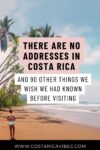

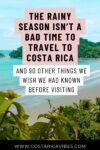

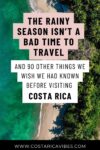
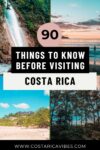
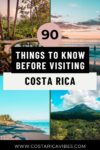


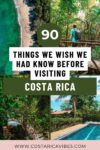
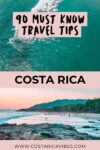



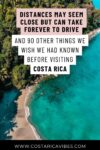
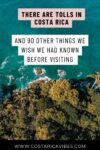




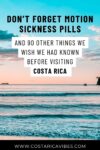

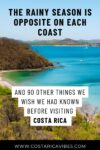

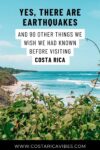

Hi Sarah,
My flight has a stopover in Panama City for over an hour. I will be flying from California. Do I still need a yellow fever vaccine?
Thank you.
Hi Linda, From Panama you do not need a yellow fever shot. Only from South American countries not Central American countries. Have a great trip! And feel free to message me if you have any other questions. Also, try to get a window seat if landing in Panama during the day. You usually get a great view of the Panama canal. 🙂
Hey there! My Fiancé and I are traveling to the Santa Teresa beach area in May for our honeymoon and we are trying to decide on the best travel route. What would you recommend to first time Costa Rica travelers: flying into the Liberia airport and renting a car for the drive or into the San Jose airport and renting a car/ catching a ride on the ferry? We are a bit intimidated by the ferry travel and aligning our flight schedule correctly. Also, your travel tips are so helpful! Thank you so so much! Answered so many of our questions 🙂
Hi Jocelyn, Personally, I would go for flying in to San Jose and taking the ferry. In May it tends not to be too crowded so you should be ok getting a spot on the ferry heading over. The drive is much much easier that way. If possible, try to get a flight that doesn’t get in too late in the evening. And, if you can only get a late flight then its best to stay near the airport for the first night and then try to get the first ferry the next day. I’m just saying that because it is best to get the 2pm ferry at the latest if possible so you won’t have to drive in the dark.
Let me know if you have any other questions!
Hello,
I am going to Costa Rica in a couple days. I plan on staying in la fortuna for a couple of days and then I want to head to a more beachy area. We will have a rental car to go from place to place I was thinking either tamarindo or jaco area in a resort. What do you suggest? I know the one is pretty far but I honestly am not sure of what to do in the jaco or central area.
Thanks!
Hi Emily, Personally I prefer Tamarindo. It is just an overall nicer town. If you go to Tamarindo I suggest doing a bit of beach hopping.Just north of Tamarindo are Playa Grande and Playa Flamingo. You could make a day of visiting those two beaches. about 45 minutes south of Tamarindo down a dirt road is Playa Avellanas. This beach is really nice and one of our favorite beach bars is there. https://www.tripadvisor.com/Restaurant_Review-g1075571-d1542328-Reviews-Lola_s-Playa_Avellanas_Tamarindo_Province_of_Guanacaste.html
Let me know if you have any other questions!